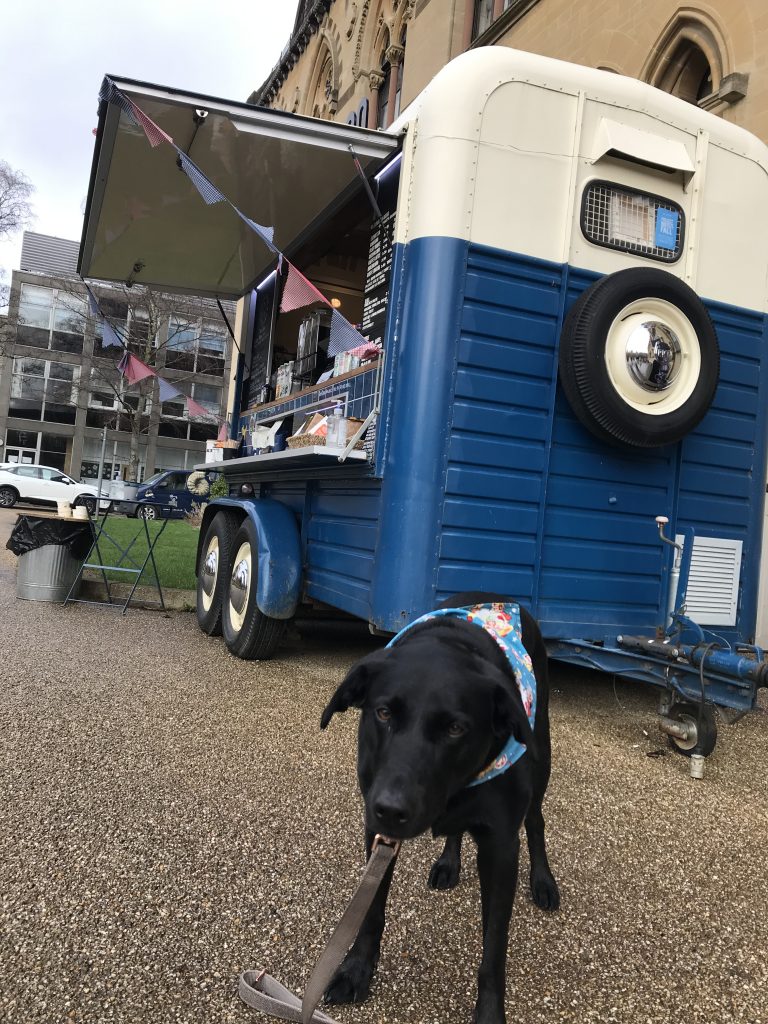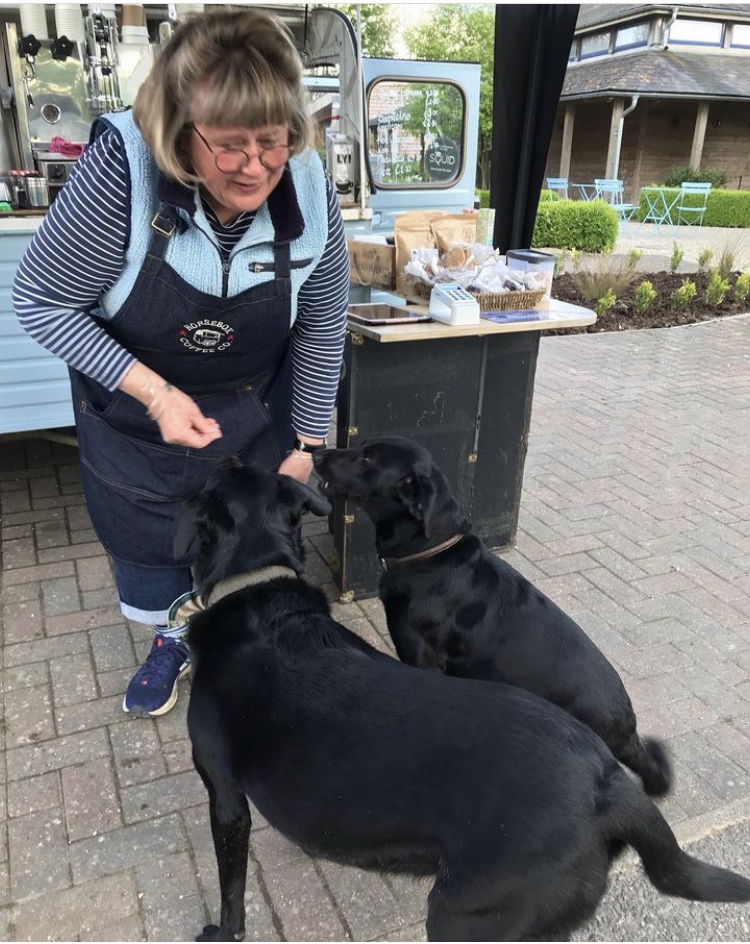My Experience at Dark Horse Roastery’s Barista Course
Embarking on Dark Horse Roastery‘s City & Guilds Barista Level 2 VRQ course was a journey into the captivating world of coffee. Led by the infectiously enthusiastic Emily, the course struck a perfect balance between packed content and manageable pace, ensuring I never felt overwhelmed. We delved into sensory exploration, tasting diverse coffee types and learning about various roasting techniques. Witnessing the roasting process firsthand, right on-site, was an enlightening experience. The classroom exuded charm, adorned with inspiring photos of coffee growers and the bean processing journey, while coffee sack covered furniture immersed us in the coffee culture. Picture three days brimming with laughter, learning, and of course, abundant coffee. From the moment I entered Dark Horse Roastery, enveloped by the rich aroma of freshly roasted beans, and welcomed with freshly baked croissants, I sensed something extraordinary awaiting me. Moreover, with just three participants in the course, I was fortunate to share the experience with fellow coffee enthusiasts, enhancing the journey even further.
It covered all the senses
Smell: As soon as I walked into the training room, I was greeted by the enticing aroma of freshly ground coffee beans. It was invigorating and set the stage for an immersive experience. Throughout the course, I had the opportunity to explore a variety of coffee blends, each with its own distinct aroma. From the floral notes of light roasts to the bold, earthy scent of dark roasts, every cup offered a unique olfactory experience. The rich aroma of the coffee beans not only awakened my senses but also deepened my appreciation for the art of coffee roasting.
Taste: Alongside the captivating aromas, I savored the opportunity to taste a diverse range of coffees. From single-origin beans to expertly crafted blends, each cup offered a new flavor adventure. With each sip, I could discern subtle differences in acidity, sweetness, and body, further enhancing my understanding of the complexities of coffee. Whether exploring the bright, citrusy notes of a light roast or the rich, chocolatey flavors of a dark roast, every taste sensation was a testament to the craftsmanship involved in coffee-making.
Hearing: One of the most fascinating aspects was learning to listen to the sound of frothing milk. Emily emphasized the importance of achieving the perfect texture by the distinct sound it makes. It was like tuning into a symphony of coffee-making.
Sight: Crafting latte art was both challenging and rewarding. I enjoyed the creativity involved in pouring steamed milk into espresso to create the intricate design of a heart. The visual appeal of a well-presented coffee truly enhances the overall experience for both the barista and the customer.
Touch: Exploring the tactile qualities of raw chocolate, coffee beans, and even the milk jug during the course was enlightening. Feeling the smoothness of the chocolate, the varying textures of coffee beans, and learning to gauge the temperature of the milk jug by touch provided valuable sensory experiences. These tactile interactions deepened my understanding of the ingredients’ quality, freshness, and preparation techniques, enriching my journey as a barista.
The coffee beans
One of the highlights of the course was delving into the origins of coffee—learning about where it comes from, how it’s grown, and processed and the journey it takes from bean to cup. Emily’s coffee which is roasted on site is ethically soured and grown.
Emily told us the legend of coffee
The legend of coffee’s origin traces back to Ethiopia, where it’s said that a goat herder named Kaldi discovered coffee around 850 AD. According to the story, Kaldi noticed that his goats became particularly energetic after consuming red berries from a certain bush. Curious, he tried the berries himself and experienced a similar burst of energy. Intrigued by this discovery, Kaldi brought the berries to a local monastery, where monks used them to create a drink that helped them stay awake during long hours of prayer. Over time, this practice of brewing coffee spread throughout the region and eventually across the globe, becoming an integral part of cultures worldwide. While the exact details of this legend may be embellished, it reflects the rich history and cultural significance of coffee in Ethiopia and beyond.
The origins of coffee
- Coffee plants thrive in tropical climates with rich soil, high humidity, and consistent rainfall. They are typically grown in regions near the equator, often referred to as the “Coffee Belt.”
- Planting: Coffee is grown from seeds, which are usually planted in nurseries. After the seedlings have grown to a certain size, they are transplanted to their permanent location in the fields.
- Growing Conditions: Coffee plants require shade in their early years but need sunlight as they mature. They are often intercropped with trees to provide shade and help maintain soil health. Additionally, coffee plants need well-drained soil and regular watering.
- Harvesting: Coffee cherries, (they look like cherries) the fruit that contains the coffee beans, are typically harvested once they reach peak ripeness. This can be done manually by hand-picking each cherry or mechanically using specialized equipment.
- Processing: After harvesting, coffee cherries undergo processing to extract the coffee beans. There are two primary method: a. Dry Processing (Natural Method): In this method, the cherries are spread out in the sun to dry. Once dried, the outer layers are removed to reveal the beans inside. b. Wet Processing (Washed Method): In this method, the cherries are pulped to remove the outer skin and pulp. The beans are then fermented in water to remove the mucilage before being washed and dried.
- Milling: After drying, the beans are milled to remove the parchment layer and any remaining husk. This results in green coffee beans, which are then sorted and graded based on size, weight, and quality.
- Roasting: Green coffee beans are roasted to develop their flavor and aroma. The roasting process is crucial and can greatly influence the taste of the final coffee. Roasting times and temperatures vary depending on the desired roast level.
- Grinding and Brewing: Once roasted, coffee beans are ground to the desired consistency and brewed to make coffee. There are various methods of brewing, including espresso, drip, French press, and more.
The two main types of coffee
- Arabica: Arabica coffee beans are known for their smooth, mild flavor profile with a range of nuanced flavors like floral, fruity, and acidic notes. They typically have lower caffeine content compared to Robusta beans. Arabica plants are grown at higher altitudes in cooler climates, requiring more care and attention but resulting in a higher-quality bean.
- Robusta: Robusta coffee beans have a stronger, more robust flavor profile with earthy, nutty, and sometimes bitter notes. They contain more caffeine compared to Arabica beans. Robusta plants are hardier and more resistant to pests and diseases, making them easier to cultivate in lower altitudes and warmer climates. They are often used in espresso blends and instant coffee due to their bold flavor and higher caffeine content.
Inspired by this newfound knowledge, I’ve even decided to try my hand at growing coffee myself in my allotment poly tunnel. Who knows, maybe I’ll have my own little coffee garden someday!
We also learned about how Cacao is primarily grown in regions near the equator, known as the “cocoa belt,” which includes countries such as: Ivory Coast, Ghana, and Nigeria.
And also about tea and making smoothies. We had to come up with are own recipes, I love beetroot so had already juiced some beetroot at home to add to my smoothie.
But perhaps the most enjoyable part of the course was the hands-on experience, especially the role-playing sessions where we got to practice our customer service skills. Picture this: Emily, our incredible instructor, led us through scenarios with the charm and enthusiasm of a seasoned barista. Her passion for coffee was infectious, and she shared wonderful stories about her life in the coffee world, including her adventures turning horseboxes and a French van into coffee shops. It was nothing short of magical.
As we wrapped up the course, I couldn’t help but feel a sense of gratitude for the experience. Not only did I gain valuable skills and knowledge, but I also made lifelong memories and forged connections with fellow coffee lovers. And as I look ahead to my new role as a barista for a large commercial coffee chain, I do so with confidence, knowing that I’ve been equipped with the tools to succeed.
So here’s to Dark Horse Roastery, Emily, and her team who are all lovely, and the wonderful world of coffee. Thank you for an unforgettable experience—one that I’ll cherish for years to come. Cheers to many more brewtiful adventures ahead! ☕️🌱
If you have been inspired to take this course link here. https://darkhorseroastery.co.uk/products/city-guilds
https://darkhorseroastery.co.uk
https://www.instagram.com/darkhorseroastery
https://www.facebook.com/darkhorseroastery

